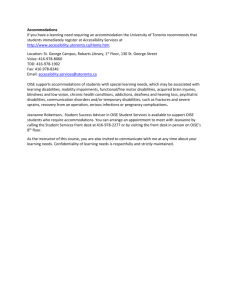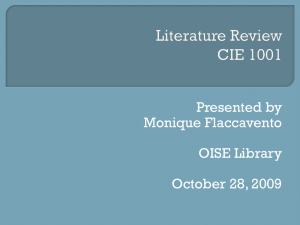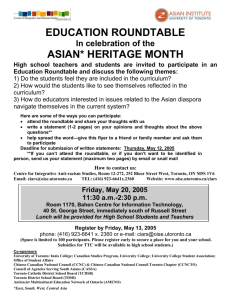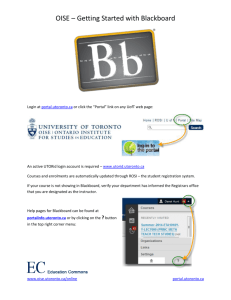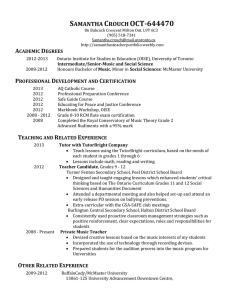Curriculum - Nipissing University Word
advertisement
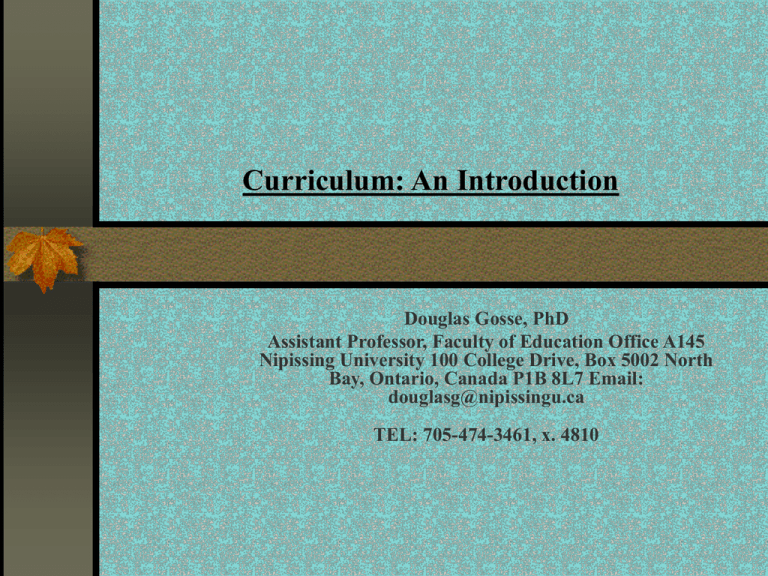
Curriculum: An Introduction Douglas Gosse, PhD Assistant Professor, Faculty of Education Office A145 Nipissing University 100 College Drive, Box 5002 North Bay, Ontario, Canada P1B 8L7 Email: douglasg@nipissingu.ca TEL: 705-474-3461, x. 4810 What is curriculum?? degosse@oise.utoronto.ca 2 Gosse, D. (1995). What is curriculum? (Master's degree paper). St. John's: Memorial University. “Curriculum is more than a course of study at school, college, etc., from the Latin word for “run,” as Webster's dictionary would lead us to believe . . . curriculum should address the rapidly changing needs of society to contribute to the development of productive citizens.” degosse@oise.utoronto.ca 3 Curriculum? There are many ways of viewing curriculum: degosse@oise.utoronto.ca 4 Explicit curriculum 1. Explicit curriculum refers to what is consciously and intentionally presented. It is the official curriculum, or written curriculum, which gives the basic lesson plan to be followed, including objectives, sequence, and materials, what is taught by the teacher, and the learning outcomes for the student. This is the overt curriculum, the "official" and "operational" curriculum of Posner, or, as described by MacLean, the "program" and would include the methods, subject matter and materials. degosse@oise.utoronto.ca 5 2. Implicit curriculum 2. Implicit curriculum includes the norms and values of the surrounding society, the setting in which the learning occurs (including the decoration and set-up of the area), and the broader environment in which education occurs. This is the covert, or Posner's "hidden" curriculum. degosse@oise.utoronto.ca 6 3. Null curriculum 3. Null curriculum consists of what is not taught. Consideration must be given to the reasons behind why things are not included in the explicit curriculum or recognized in examination of the implicit curriculum. degosse@oise.utoronto.ca 7 4. Extracurricular curriculum 4. Extracurricular curriculum includes experience (planned and unplanned) outside of the immediate educational session, and includes total church community and home religious activities. This has been broadened beyond Posner's concern about planned learning to include all learning outside the immediate educational setting. degosse@oise.utoronto.ca 8 5. Experience as curriculum 5. Experience as curriculum is "what happens to the [learner], what the [learner] sees, understands, appreciates and loves and also what the [learner]dislikes, fears, repudiates." (MacLean, p.2) degosse@oise.utoronto.ca 9 Helen Zidowecki 1995 (RR1 Box 279, Litchfield, Maine 04350, 207-582-5308, www.hzmre.com) The Webster's New World Dictionary of the American Language (Simon and Schuster, 1984) describes curriculum as derived from Latin currere and includes concepts of "a running, course, race, career." The term applies to a studies required for graduation or to all of the courses offered in a school. And even the plural can be "ula" to "ulums." degosse@oise.utoronto.ca 10 Hemmings, A. (2000). The “Hidden” Corridor Curriculum. The High School Journal, 83(2), 1-10. ‘Hidden Curriculum’: the unofficial 3 Rs – rules, routines, and regulations, producing unequal social relations – that govern student life; these are unplanned lessons, like ghosts in school settings, that may result in student school failure socially or academically, but affect all. degosse@oise.utoronto.ca 11 Parsons, C., & Brown, P. (2001). Educating for Diversity: An Invitation to Empathy and Action. Action in Teacher Education, 23(3), 1-4. In teacher preparation programs, most education students are female and from white, middle-class backgrounds. They tend to equate diversity as 'otherness' and themselves as 'normal.' We need to succeed in making difference personal, bridging empathy and action. degosse@oise.utoronto.ca 12 Grauerholz, L. (2001). Teaching Holistically to Achieve Deep Learning. College Teaching, 49(2), 44-50. Holistic teaching seeks to provide a safe environment for students to express their ideas and feelings openly. The intent also is to acknowledge and legitimate the many different voices and experiences of our students, especially those who have historically been silenced in traditional classroom settings. degosse@oise.utoronto.ca 13
